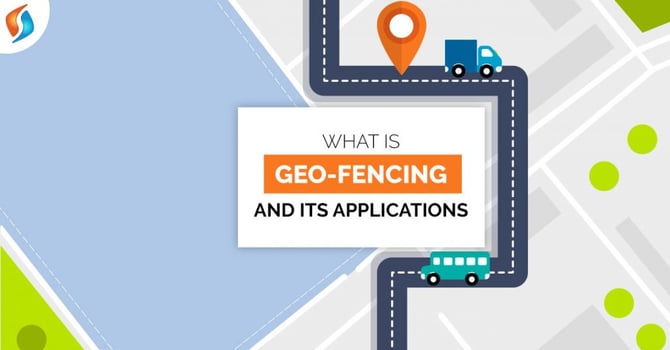A Beginner’s Guide to Geo-fencing for Mobile Applications
Geo-fencing for mobile applications offers businesses a powerful tool to engage customers, streamline operations, and deliver personalized experiences. By leveraging this technology, businesses can drive growth and success across various industries.

In today's digital age, businesses are constantly seeking innovative ways to connect with their customers. One such technology that has gained significant traction is geo-fencing. But what exactly is geo-fencing, and how can it benefit your business? In this beginner's guide, we'll delve into the world of geo-fencing for mobile applications, exploring its functionalities, applications, and benefits.
What is Geo-fencing?
Imagine creating a virtual perimeter around a specific geographical area, like a store or a neighbourhood. That's essentially what geo-fencing does. It utilizes GPS, RFID, Wi-Fi, or cellular data to define geographical boundaries and trigger actions when a mobile device enters or exits the designated area.
How Does Geo-fencing Work?
Geo-fencing relies on the location services of mobile devices to detect when a user enters or leaves a predefined area. Once the device crosses the virtual boundary, it can prompt various actions, such as sending notifications, displaying targeted ads, or collecting data for analytics.
The overall scope of this technology is very vast. Let’s look into some day-to-day practical applications where this technology can be very helpful.
- The local restaurant owner can trigger a special offer of the day text message when the opt-in user enters a defined geographical area.
- Let’s say you are the parents of a 12-year-old kid who wants to go 3 blocks away to meet his friends, but as parents, you are not uncomfortable with your child being that far away from home. You can use a geofencing functionality-based app, which will trigger you when your child is outside of a pre-defined virtual boundary.
- The truck fleet owner or manager can use a geofencing-based app to track the truck fleet and get a notification when a truck driver breaks his route.
Benefits of Geo-fencing
- Targeted Marketing: By sending relevant notifications or promotions to users within a specific location, businesses can target their marketing efforts more effectively.
- Enhanced Customer Engagement: Geo-fencing allows businesses to engage with customers in real time, providing personalized experiences based on their location.
- Improved Operational Efficiency: For businesses with physical locations, geo-fencing can streamline operations by automating tasks like check-ins or inventory management.
Implementing Geo-fencing in Mobile Applications
Integrating Geo-fencing in Your App
Whether you're developing a mobile app for retail, hospitality, or transportation, integrating geofencing capabilities can add significant value to your offering. Work with experienced developers to incorporate geo-fencing APIs and ensure seamless functionality across platforms.
Customizing Geo-fencing Parameters
One of the key advantages of geo-fencing is its flexibility. Businesses can customize parameters such as the size and shape of the geo-fence, as well as the actions triggered upon entry or exit. Tailor these settings to align with your specific business objectives and target audience.
Ensuring Privacy and Security
While geo-fencing offers numerous benefits, it's crucial to prioritize user privacy and security. Implement robust data protection measures, obtain user consent where necessary, and adhere to relevant regulations such as GDPR to safeguard sensitive information.
Applications of Geo-fencing in Various Industries
Retail and E-commerce
In the retail sector, geo-fencing can be utilized to send personalized offers to shoppers when they are near a store, thereby driving foot traffic and increasing sales. E-commerce platforms can also leverage geo-fencing to provide location-based recommendations and streamline the checkout process.
Hospitality and Tourism
Hotels and tourist attractions can enhance the visitor experience by deploying geo-fencing to deliver relevant information and promotions based on the user's location. From offering special discounts at nearby restaurants to providing self-guided tour itineraries, the possibilities are endless.
Transportation and Logistics
Geo-fencing plays a vital role in the transportation and logistics industry by enabling fleet tracking, route optimization, and geographically-triggered alerts. When combined with other technologies, choosing the right route optimization software is essential to ensuring operational efficiency. Businesses can benefit from exploring tips for picking route optimization software to enhance their logistics planning and execution.
Whether managing a delivery fleet or coordinating ride-sharing services, businesses can optimize operations and improve efficiency.
Geo App Definition
Geo-fence is a specific software program that uses a global positioning system (GPS) to define the virtual boundary on a map based on real-world location. By using the geo-fencing technology-based app or program, we can trigger or set up a specific notification alarm when the device enters or exits the virtual boundary defined by the app/program admin.
There are majorly two major ways through which the geo-fence-based application defines virtual boundaries.
- The first part includes the administrators integrating Google Earth; through this, the administrator can define the boundaries of the specific geographical area.
- In the second process, the administrator can define the virtual boundary by longitude and latitude or via web-based maps.
How Accurate is Geo-Fencing?
To ensure that geofences are accurate, the technology uses a combination of GPS, cellular data, or Wi-Fi data.
In environments where cell phone towers and Wi-Fi routers are everywhere, urban environments provide a good example. The accuracy of geo-fencing can reach anywhere from 100 to 200 meters.
Keep in mind that geo-fencing will always work properly when you enable a smartphone’s Wi-Fi enabled and activate the GPS services.
Examples of geo-fencing apps
- Uber or other cab service providers
- Zomato, Deliveroo or other food delivery apps
- Sephora
- Dunkin Donut's Snapchat Geofilter
Geo-fencing leverage the strong combination of GPS and cellular triangulation, Bluetooth, etc and this provides it unified integration with different technologies.
Bring Your Ideas to Life with Custom Web Development Services
Ready to turn your vision into reality? Our custom web development services empower businesses to create unique digital experiences that resonate with their target audience.
Conclusion
In conclusion, geo-fencing offers a powerful tool for businesses looking to engage customers, streamline operations, and deliver personalized experiences. By understanding the fundamentals of geo-fencing and exploring its applications across various industries, you can harness its potential to drive growth and success.
Frequently Asked Questions
Have a question in mind? We are here to answer. If you don’t see your question here, drop us a line at our contact page.
What are the key components of a geo-fencing system?
![]()
A geo-fencing system typically consists of a mobile app with location tracking capabilities, a server to process location data, and a user interface for defining and managing geo-fences.
Can geo-fencing be used for employee tracking in the workplace?
![]()
Yes, geo-fencing can be employed for employee tracking to ensure safety, monitor attendance, or restrict access to sensitive areas within the workplace.
Are there any limitations to geo-fencing technology?
![]()
While geo-fencing is a powerful tool, it may face limitations in areas with poor GPS or cellular coverage. Additionally, the accuracy of geo-fencing can vary depending on factors such as device compatibility and environmental conditions.
How can businesses measure the effectiveness of their geo-fencing campaigns?
![]()
Businesses can track metrics such as foot traffic, conversion rates, and user engagement to evaluate the success of their geo-fencing campaigns. Analyzing these data points can provide valuable insights for optimization and decision-making.
Is geo-fencing only applicable to mobile applications?
![]()
While geo-fencing is commonly associated with mobile applications, it can also be implemented in other contexts, such as web-based platforms or IoT devices, to enable location-based functionalities and experiences.


%201-1.webp)


.png?width=344&height=101&name=Mask%20group%20(5).png)

















